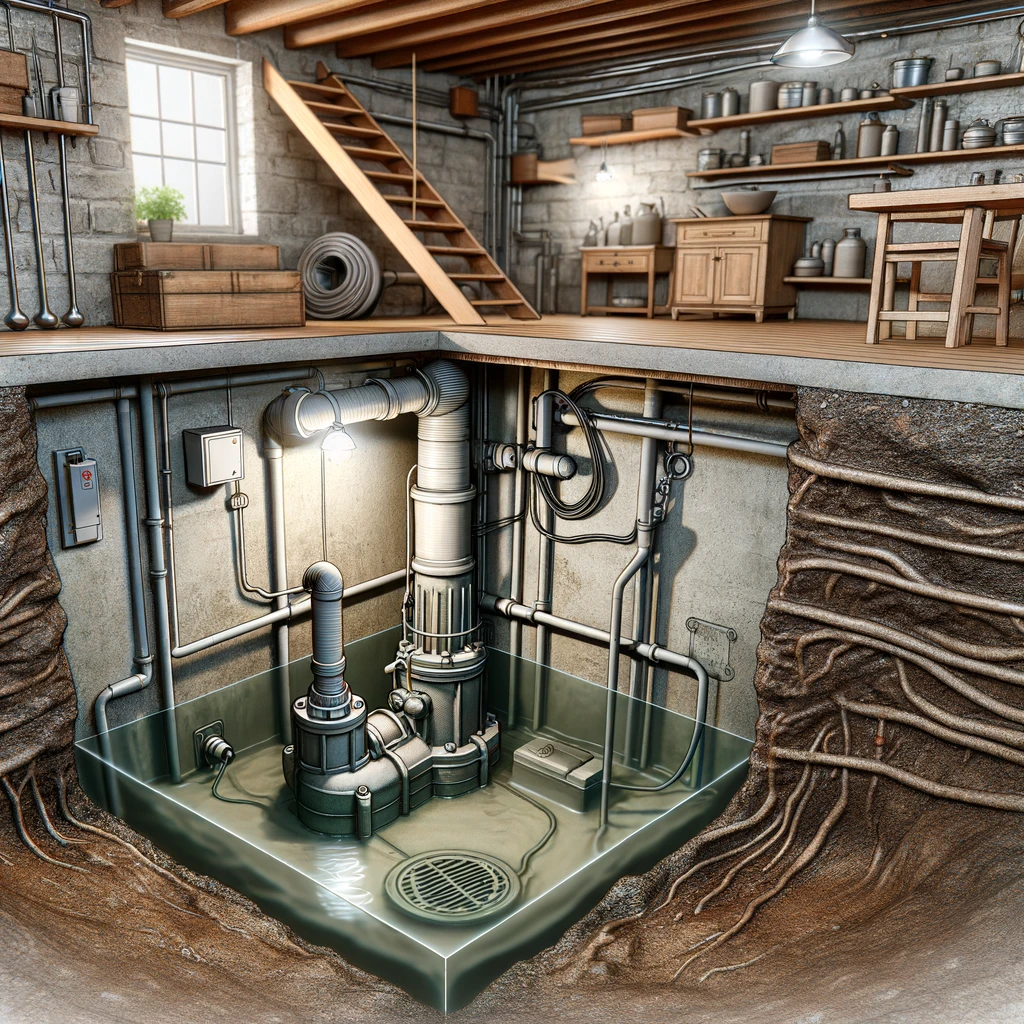
What Do Sump Pumps Do?
An in-depth look at the purpose and function of sump pumps in managing basement water accumulation.
Purpose
- Design and Role: Sump pumps are submersible pumps specifically designed to address water accumulation in basements or drainage areas. They are crucial in homes where basement moisture is a consistent issue.
- Water Movement: Their primary function is to prevent basement flooding by efficiently pumping out water that seeps through the foundation or walls. This is especially important in houses built at or close to the water table level.
Are Sump Pumps Necessary?
Assessing the importance of sump pumps in older homes and their role in preventing water damage.
Assessing the Need
- Home Prone to Water Seepage: Sump pumps are particularly vital in older homes with basements that are susceptible to water seepage. The risk of basement flooding in such homes necessitates the installation of a sump pump.
- Water Damage Prevention: Sump pumps act as a proactive measure to prevent extensive water damage and to protect the structural integrity of the home’s foundation.
How Do Sump Pumps Work?
Delving into the mechanics of sump pump operation and the process of water discharge.
Operation Mechanism
- Float Activation: Sump pumps function based on a float mechanism. This mechanism activates the pump when water in the sump pit reaches a predetermined level, effectively managing the water level and preventing overflow.
Discharge
- Water Redirection: The pump’s discharge line plays a pivotal role in channeling water away from the home. This line can be directed to various external locations like a dry well, pond, creek, or a properly set up French drain, ensuring the expelled water does not seep back into the home’s foundation.
Discharge Planning and Options
Proper management of sump pump discharge is essential to prevent water from seeping back into the foundation and to comply with local regulations.
- Choosing the Right Discharge Location: It's crucial to carefully plan where the discharged water will go. The chosen location should effectively prevent the recycled water from flowing back towards the home's foundation.
- Options for Discharge:
- Dry Well: A common choice where water is directed into a well to naturally seep into the ground.
- French Drain: An effective method for channeling water away from the property.
- Municipal Storm Drain: When considering this option, ensure that it aligns with local regulations and guidelines.
Sump Pump Maintenance
Regular maintenance is vital for ensuring the longevity and proper functioning of sump pumps.
- Common Causes of Failure:
- Improper Use and Over-Cycling: Frequent cycling due to improper use can lead to early pump failure.
- Lack of Maintenance: Neglecting regular care can result in malfunctions.
- Debris in Sump Pit: A sump pit filled with debris can impede the pump’s operation.
- Preventive Maintenance Measures:
- Regular Inspections: Consistently check for signs of wear, damage, or blockage.
- Clean the Pit: Keep the pit free from debris that might clog the pump or affect the float mechanism.
- Test the Pump: Conduct routine tests by pouring water into the pit to ensure efficient activation and water removal.
Lifespan and Additional Considerations
Understanding the expected lifespan of sump pumps and considering additional features for enhanced functionality.
- Lifespan of Sump Pumps: A well-maintained and properly used sump pump should last between six to ten years. Avoiding overwork and keeping it clear of debris can extend its life.
- Advanced Features:
- Sump Pump Alarms: Installing optional alarms provides an early warning system for potential issues, allowing timely intervention.
- Backup Sump Pumps: In areas prone to power outages, having a backup sump pump is critical. It ensures the pump's continuous operation and protects your
